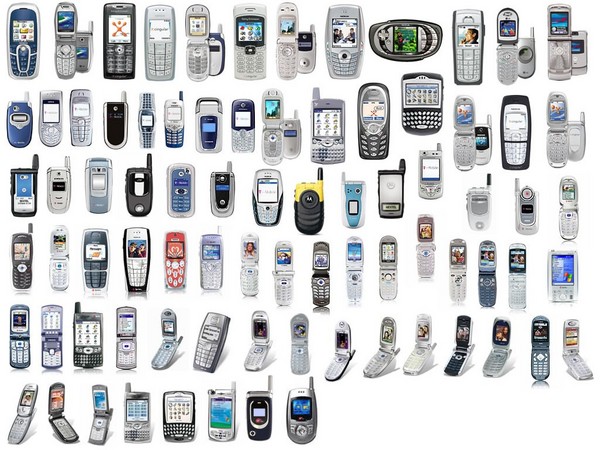
Your movements are valuable — but not in the way you may think. Mobile technology companies are moving rapidly to exploit the vast amount of data collected from the billions of mobile devices. This data is extremely valuable to an array of organizations, including urban planners, retailers, and travel and transportation marketers. And, of course, this raises significant privacy concerns. Many believe that when the data is used collectively it preserves user anonymity. However, if correlated with other data sources it could be used to discover a range of unintended and previously private information, relating both to individuals and to groups.
From MIT Technology Review:
Wireless operators have access to an unprecedented volume of information about users’ real-world activities, but for years these massive data troves were put to little use other than for internal planning and marketing.
This data is under lock and key no more. Under pressure to seek new revenue streams (see “AT&T Looks to Outside Developers for Innovation”), a growing number of mobile carriers are now carefully mining, packaging, and repurposing their subscriber data to create powerful statistics about how people are moving about in the real world.
More comprehensive than the data collected by any app, this is the kind of information that, experts believe, could help cities plan smarter road networks, businesses reach more potential customers, and health officials track diseases. But even if shared with the utmost of care to protect anonymity, it could also present new privacy risks for customers.
Verizon Wireless, the largest U.S. carrier with more than 98 million retail customers, shows how such a program could come together. In late 2011, the company changed its privacy policy so that it could share anonymous and aggregated subscriber data with outside parties. That made possible the launch of its Precision Market Insights division last October.
The program, still in its early days, is creating a natural extension of what already happens online, with websites tracking clicks and getting a detailed breakdown of where visitors come from and what they are interested in.
Similarly, Verizon is working to sell demographics about the people who, for example, attend an event, how they got there or the kinds of apps they use once they arrive. In a recent case study, says program spokeswoman Debra Lewis, Verizon showed that fans from Baltimore outnumbered fans from San Francisco by three to one inside the Super Bowl stadium. That information might have been expensive or difficult to obtain in other ways, such as through surveys, because not all the people in the stadium purchased their own tickets and had credit card information on file, nor had they all downloaded the Super Bowl’s app.
Other telecommunications companies are exploring similar ideas. In Europe, for example, Telefonica launched a similar program last October, and the head of this new business unit gave the keynote address at new industry conference on “big data monetization in telecoms” in January.
“It doesn’t look to me like it’s a big part of their [telcos’] business yet, though at the same time it could be,” says Vincent Blondel, an applied mathematician who is now working on a research challenge from the operator Orange to analyze two billion anonymous records of communications between five million customers in Africa.
The concerns about making such data available, Blondel says, are not that individual data points will leak out or contain compromising information but that they might be cross-referenced with other data sources to reveal unintended details about individuals or specific groups (see “How Access to Location Data Could Trample Your Privacy”).
Already, some startups are building businesses by aggregating this kind of data in useful ways, beyond what individual companies may offer. For example, AirSage, an Atlanta, Georgia, a company founded in 2000, has spent much of the last decade negotiating what it says are exclusive rights to put its hardware inside the firewalls of two of the top three U.S. wireless carriers and collect, anonymize, encrypt, and analyze cellular tower signaling data in real time. Since AirSage solidified the second of these major partnerships about a year ago (it won’t specify which specific carriers it works with), it has been processing 15 billion locations a day and can account for movement of about a third of the U.S. population in some places to within less than 100 meters, says marketing vice president Andrea Moe.
As users’ mobile devices ping cellular towers in different locations, AirSage’s algorithms look for patterns in that location data—mostly to help transportation planners and traffic reports, so far. For example, the software might infer that the owners of devices that spend time in a business park from nine to five are likely at work, so a highway engineer might be able to estimate how much traffic on the local freeway exit is due to commuters.
Other companies are starting to add additional layers of information beyond cellular network data. One customer of AirSage is a relatively small San Francisco startup, Streetlight Data which recently raised $3 million in financing backed partly by the venture capital arm of Deutsche Telekom.
Streetlight buys both cellular network and GPS navigation data that can be mined for useful market research. (The cellular data covers a larger number of people, but the GPS data, collected by mapping software providers, can improve accuracy.) Today, many companies already build massive demographic and behavioral databases on top of U.S. Census information about households to help retailers choose where to build new stores and plan marketing budgets. But Streetlight’s software, with interactive, color-coded maps of neighborhoods and roads, offers more practical information. It can be tied to the demographics of people who work nearby, commute through on a particular highway, or are just there for a visit, rather than just supplying information about who lives in the area.
Read the entire article following the jump.
Image: mobile devices. Courtesy of W3.org
